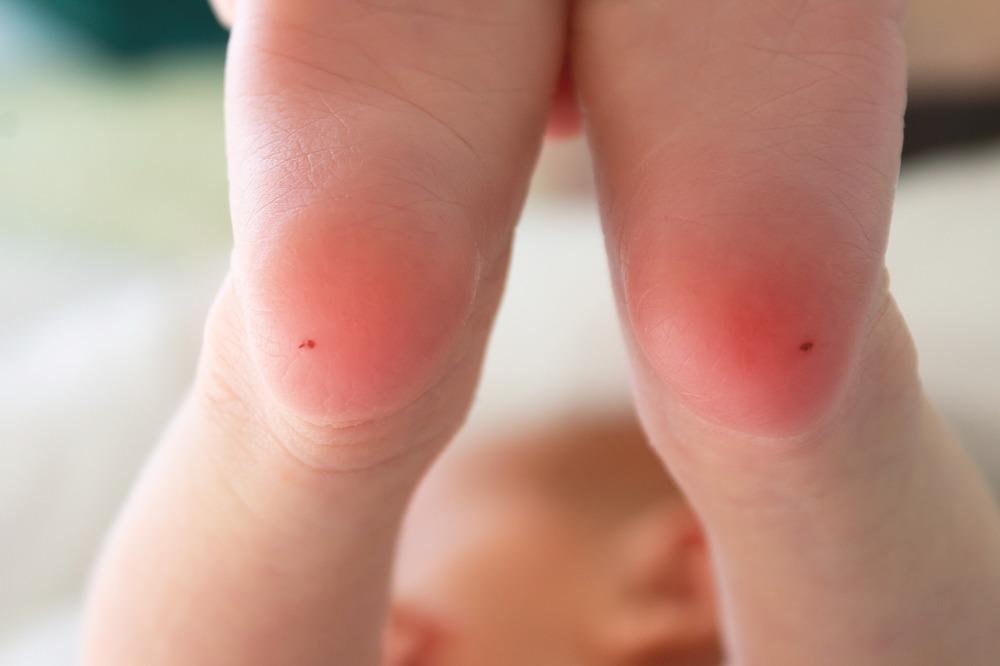Introduction
The Purpose of Newborn Screening
Laboratory Tests Used to Measure Blood Phenylalanine
The Biochemical Basis of the PKU test: BIA
The Use of Tandem Mass Spectrometry: A Later PKU Test
References
The phenylketonuria (PKU) test is a diagnostic tool used to test infants for phenylketonuria a few days after birth. PKU is an autosomal recessive inborn error of phenylalanine (Phe). PKU is the first condition that implemented screening in newborns. This has resulted in generations of children who do not have to suffer disease manifestations, including intellectual disability.
PKU results from a deficiency in the enzyme phenylalanine hydroxylase (PAH), predominantly caused by mutations in the PAH gene on chromosome 12q23.2. >1000 pathological variants of PAH have been described. PAH is required to metabolize l-Phe to l-Tyrosine (l-Tyr). This causes toxic by-products of Phe metabolism.
Untreated PKU is associated with an abnormal phenotype which manifests as a failure to grow, microcephaly, intellectual impairment, and seizures.

Image Credit: antibydni/Shutterstock.com
Newborn screening is the testing of infants typically within the first three to five days of life for the presidents of inborn errors of metabolism fibrosis, hemoglobinopathies, endocrinopathies, and other forms of disorder, depending on the requirements. Newborn screening is recognized as a public health measure that produces a measurable impact on the affected individuals, their families, and society.
Newborn screening identifies neonates at a high risk of developing a particular disorder but does not definitively diagnose. Subsequently, a confirmatory diagnosis that follows a diagnostic algorithm is necessary in cases where clinical suspicion arises.
The traditional standard method employed for the diagnosis and monitoring of PKU patients is the quantification of phenylalanine in deproteinized plasma samples, using ion-exchange chromatography (IEC) with ninhydrin detection. Relative to liquid chromatography-tandem mass spectrometry (LC-MS/MS), this procedure has an extended analytical run-time, with low sample throughput and lower specificity.
This test has a typical intra-laboratory coefficient of variation (CV) for phenylalanine of ~ 5%. The CV measures the degree of variability in a test and is defined as the standard deviation (SD) ratio to the mean of the results multiplied by 100.
This test is not practical for routine monitoring due to the logistics of testing samples. Instead, measuring phenylalanine in dried bloodspot (DBS) specimens is preferred. This comprises the method used for population-based screening for PKU, developed in 1963 by Robert Guthrie, using a bacterial inhibition assay (BIA).
The BIA offers the convenience of a finger prick dabbed onto filter paper, which can be done from home.
The blood is allowed to saturate the filter paper and dried for several hours before being subject to testing. The specimens are stored in low gas-permeable plastic bags, to which a desiccant is added to minimize humidity.
A small disk of saturated paper is separated from the sheet in the laboratory, and the disk is deposited on a flat microtiter plate. To elute the blood, phosphate-buffered saline, which is comprised of 0.05% Polysorbate 80, a non-ionic surfactant and emulsifier, and 0.005% sodium azide, a biocide, which destroys, makes harmless, or controls the growth of any harmful organism, is used; this occurs overnight at 4 °C.
The principle of this test is a bacterial inhibition assay. This utilizes elevated phenylalanine levels in the blood of infants soaked into disks of filter paper to overcome β-2-thienylalanine inhibition of growth of Bacillus subtilis on agar culture.
If blood phenylalanine is at 2-4mg/dl, the growth of B subtilis is prevented as the β-2- thienylalanine can exert the inhibitory effect on the bacteria. If the concentration is in the range >4mg/dl, the elevated levels of Phe exert a negative effect on the inhibitor β-2- thienylalanine; the B subtilis spores can subsequently germinate, resulting in the growth of colonies.
Consequently, PKU patients can be readily recognized due to the increased growth of these bacteria around the blood disk. To determine the quantity of phenylalanine, approximate levels are deduced by comparison with levels of growth obtained from a known concentration calibration curve.

Image Credit: estherca/Shutterstock.com
Screening laboratories may alternatively use photometric assays or tandem mass spectrometry to analyze phenylalanine rather than the bacterial inhibition test. Most screening laboratories now use tandem mass spectrometry (MS/MS), introduced in the 1990s, to analyze amino acids, including phenylalanine. The main advantage of MS/MS is the fully automated and simultaneous analysis of amino acids. Moreover, the diagnostic sensitivity of MS/MS for PKU is superior to other analytical techniques.
In MS/MS, a specimen mixture is introduced into the system, and all analytes in the sample are analyzed at once to produce molecular ions without extensive fragmentation. These molecular ions are separated in an MS-ionised according to their mass to charge ratio (m/z). These mass-selected ions are induced to fragment in a collision cell, and the fragments are separated according to their m/z ratio. The resultant mixtures were re-analyzed in seconds using a computer program that targets groups of analytes with similar chemical structures.
Historically, MS/MS was developed as a clinical diagnostic tool for fatty acid oxidation disorders through the abnormal acylcarnitines, and this method was further applied to dry blood spots. MS/MS can detect ~8 amino acids simultaneously and recognize >30 metabolic disorders alongside PKU.
The screening for PKU reduces the incidence of mental ill-effects in previously untreated patients with PKU, from 95 to 1%. The bacterial inhibition test was the first test suitable for high throughput analysis and capable of semiquantitative analysis of phenylalanine.
Since the first PKU newborn screening program in New York in the 1960s, additional screening programs were initiated globally in the 1960s and 1970s. It is now widely recognized as an important public health measure, and ongoing newborn screening programs for PKU (and other inborn errors of metabolism) have been instituted worldwide. However, present-day screening laboratories use photometric assays or tandem mass spectrometry to analyze phenylalanine rather than the bacterial inhibition test.
- Bodamer OA (2010) Screening for Phenylketonuria. Ann Nestlé [Engl]. doi:10.1159/000312812.
- Chace DH, Millington DS, Terada N, et al. (1993) Rapid diagnosis of phenylketonuria by quantitative analysis for phenylalanine and tyrosine in neonatal blood spots by tandem mass spectrometry. Clin Chem.
- Moat SJ, Schulenburg-Brand D, Lemonde H, et al. (2020) Performance of laboratory tests used to measure blood phenylalanine for the monitoring of patients with phenylketonuria. J Inherit Metab Dis. doi:10.1002/jimd.12163.
Further Reading
Last Updated: May 18, 2022